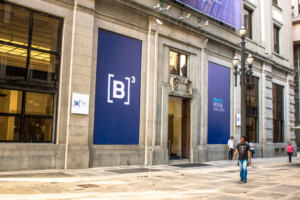On Thursday, the Ibovespa, Brazil’s primary stock index, saw a decrease of 0.75%, settling at 128,158.57 points, a drop of 966.26.
The US dollar experienced a slight increase of 0.09%, reaching R$ 4.97.
Concurrently, future interest rates, indicated by DIs, rose by about 0.9%, echoing the movements seen in U.S. Treasury bonds.
Investor actions were significantly influenced by recent updates from Brazil’s Central Bank Committee (Copom).
Similarly, Genial Investments acknowledged the unchanged base scenario, confirming the plan’s ongoing feasibility.
Amidst this backdrop, XP’s strategy team maintains an optimistic outlook for the Ibovespa, predicting it could reach 149,000 points by the end of 2024.
Analysis implies Selic rate may drop to 9% by September, signaling possibility of more rate cuts. Quarterly financial reports also played a role in market dynamics.
Cogna’s announcement of a R$373 million loss for the fourth quarter, primarily due to tax implications, resulted in an 11.9% decline in its shares.
In contrast, the banking sector perceived Yduqs’ modest downturn as an investment opportunity.
Leading stocks like Vale and Petrobras also contributed to the index’s fall, despite some positive external conditions.
Vale’s shares dropped slightly, while Petrobras saw a 2.74% decline, affected by falling global oil prices and internal challenges.
Magazine Luiza’s shares fell by 2.93%, signaling caution among investors.
As the market looks to Friday, expectations are set for a quieter day following the turbulence triggered by central bank decisions.
The focus shifts to assessing the impact of further corporate earnings reports and their potential to influence future market directions.


